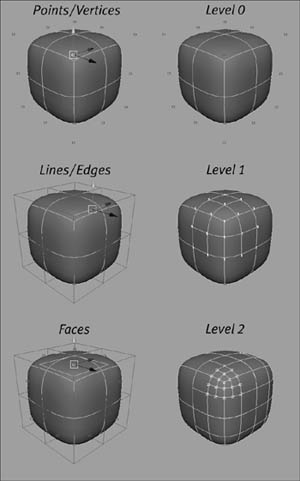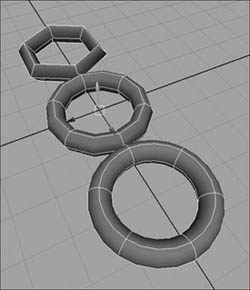About Subdiv Surfaces
|
| Subdivision surfaces, or subdivs, have been around since 1978. But only recently has computer hardware become fast enough to make working with subdivs manageable. More programs have adapted to using subdiv surfaces in their modeling workflow and more professional studios are using them in their production pipelines for feature films and broadcast work. Video games, however, are still dominated by polygons. Subdivs combine the best of both NURBS and polygons. A subdiv surface is like a polygon model in that it can define complex surfaces with only one mesh (Figure 3.60), whereas NURBS models may require many surfaces to create a complex "patch model." Like a NURBS model, a subdiv can easily be increased in detail at any point in time to more precisely draw curvature, whereas polygon models are generally un-wieldy after adding more detail. Figure 3.60. A subdiv model is one mesh that defines a complex surface. The model on the left shows a single subdiv surface, whereas the model on the right is a NURBS patch model containing over a hundred individual surfaces. Working with subdivs is, however, very reliant on the polygon modeling toolset in Maya. So becoming familiar with polygons paves the way for a better understanding of subdivs. Subdivs, like NURBS and polys, have components like points/vertices, lines/edges, and faces that can be directly manipulated to shape your model (Figure 3.61). Figure 3.61. The components of a Subdiv model and the levels of detail from coarse to refined. Subdivs in Maya are based on levels of detail. The top level known as the Level 0 mesh and has the coarsest level of detail. Below that are more levels of increasing detail. You can also use the Level 0 mesh as a sort of stand-in geometry for binding and animating. Subdivs are very versatile in this way. You can display more or less detail of the selected subdiv model you're working on by pressing Figure 3.62. You can display increasing levels of detail in a Subdiv primitive by pressing |
|


